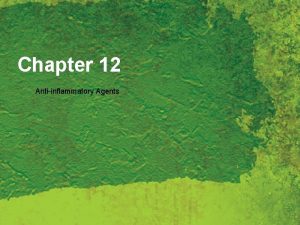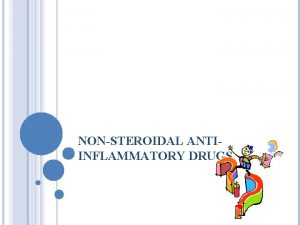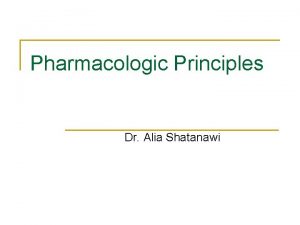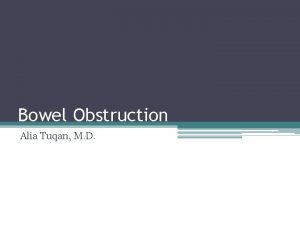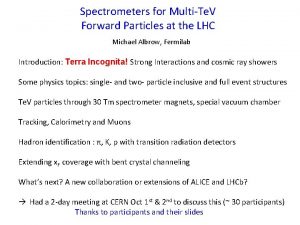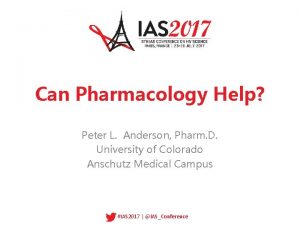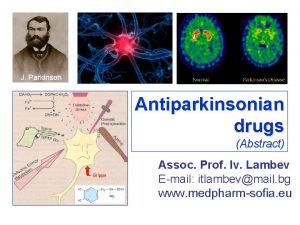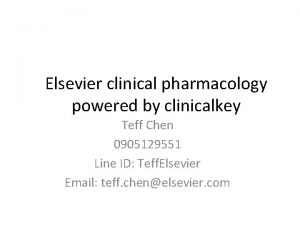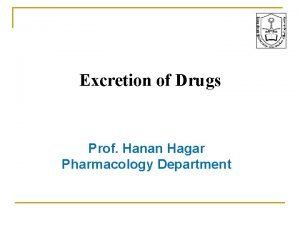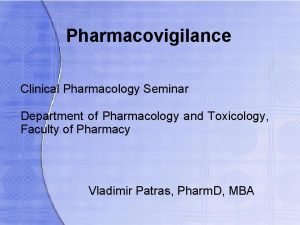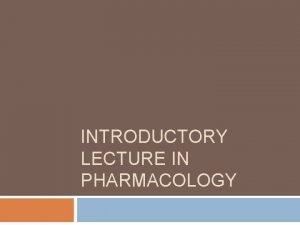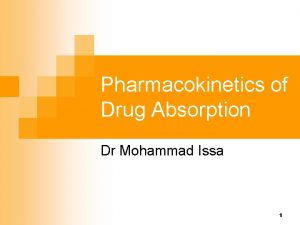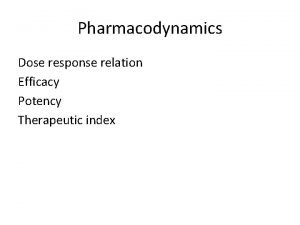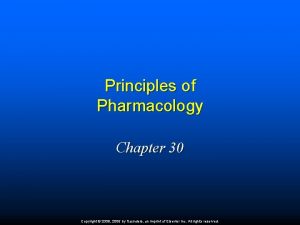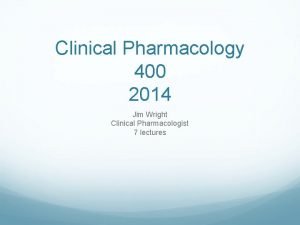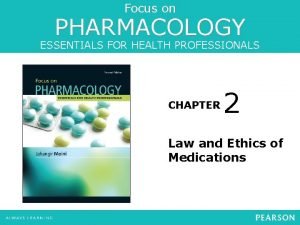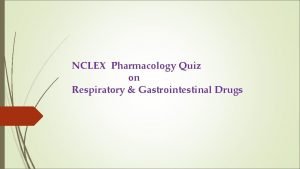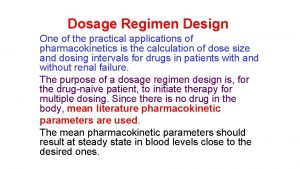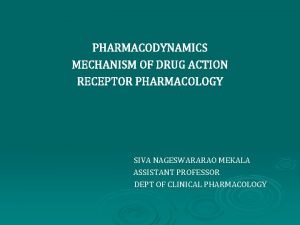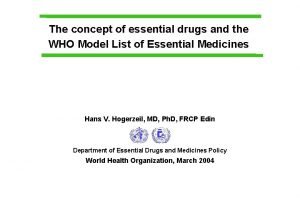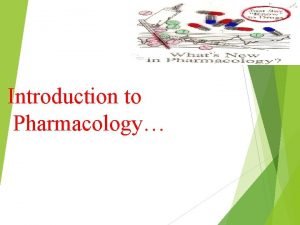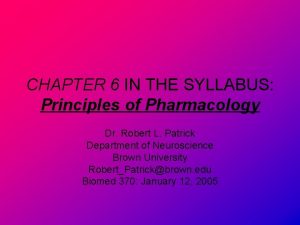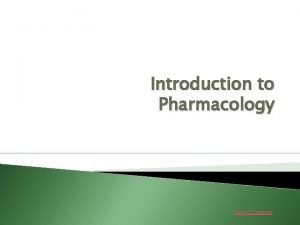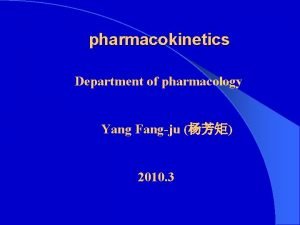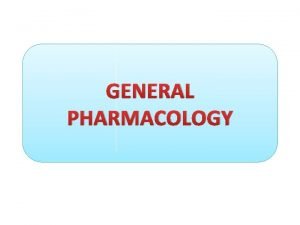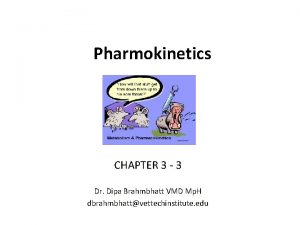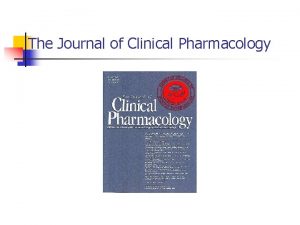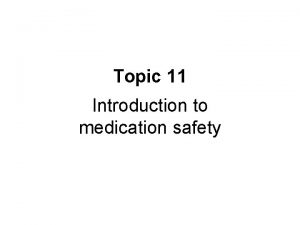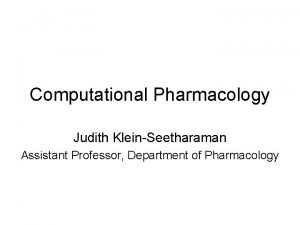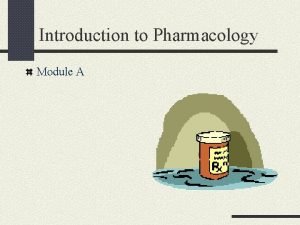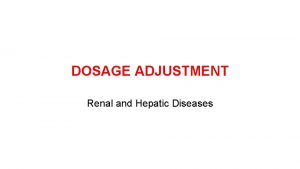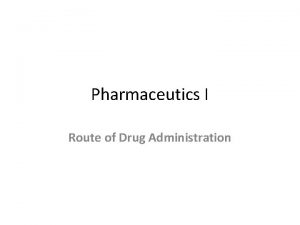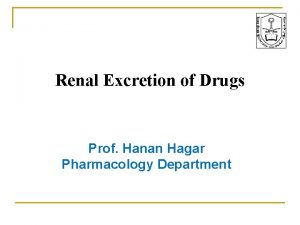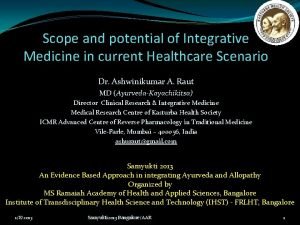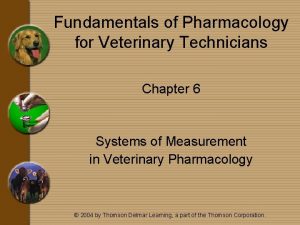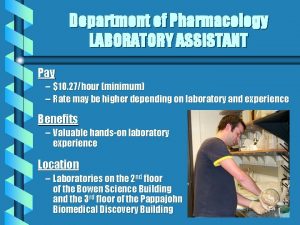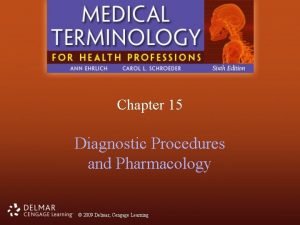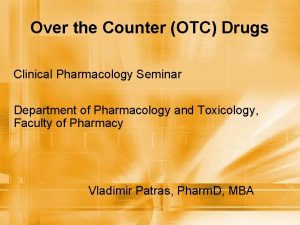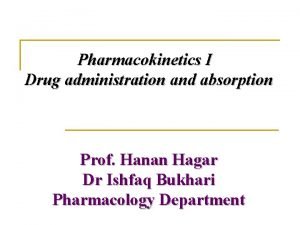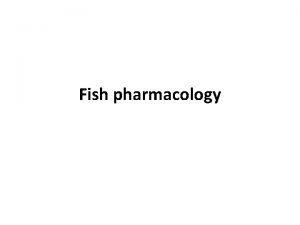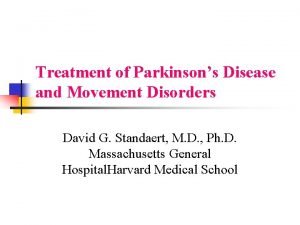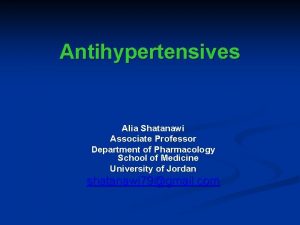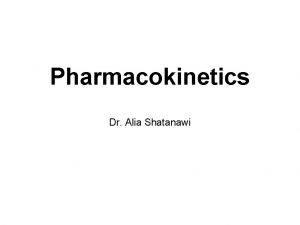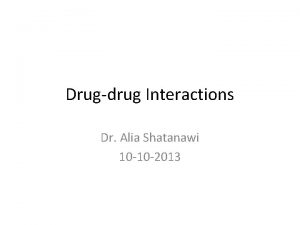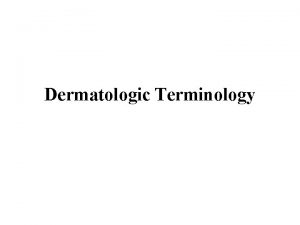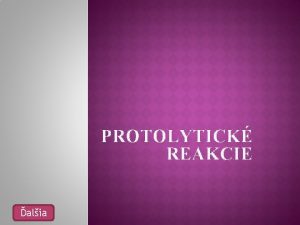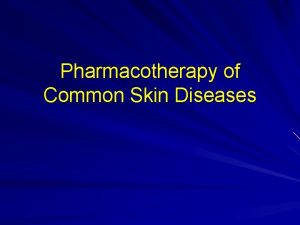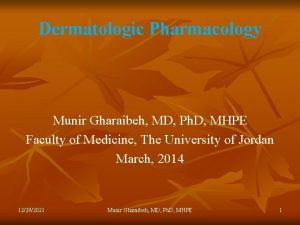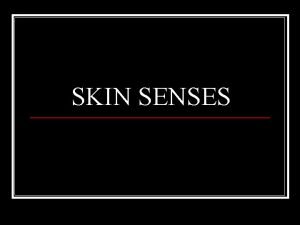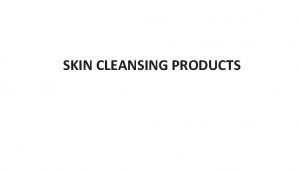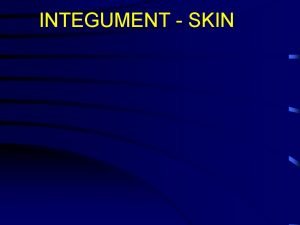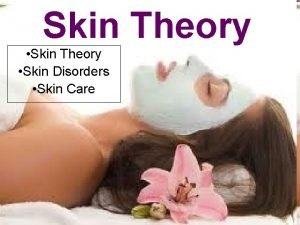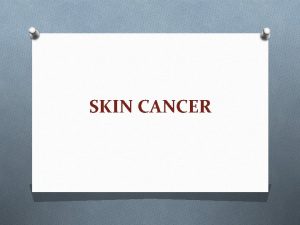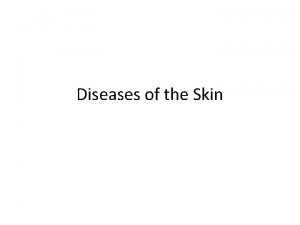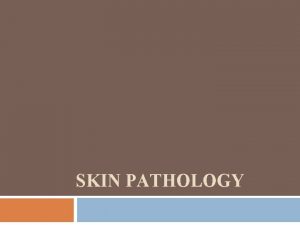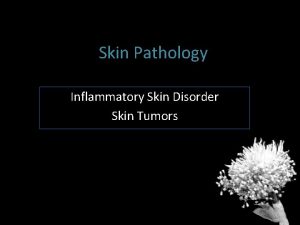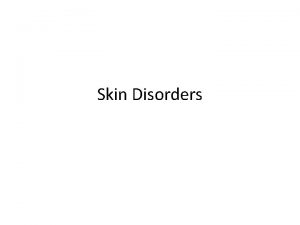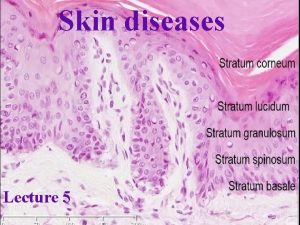Skin Pharmacology Dr Alia Shatanawi 532016 Dermatologic Pharmacology

























































- Slides: 57

Skin Pharmacology Dr. Alia Shatanawi 5/3/2016

Dermatologic Pharmacology Variables affecting Pharmacologic Response: Regional variation in drug penetration. Concentration gradient. Dosing schedule. Vehicles and occlusion.

Percutaneous Absorption.

Dermatologic Formulations • • Tinctures. Wet dressings. Lotions. Gels. Powders. Pastes. Creams. Ointments.

• • Adverse Effects of Dermatologic Preparations Burning or stinging sensation. Drying and irritation Pruritus. Erythema. Sensitization. Staining Superficial erosion.


Topical Antibacterial Agents • Gram-positive bacteria – Bacitracin – Gramicidin • Gram-negative bacteria – Polymyxin B Sulfate – Neomycin – Genatamicin

BACITRACIN • Active against streptococci, pneumococci, and staphylococci • Also , most anaerobic cocci, neisseriae, tetanus bacilli, and diphtheria bacilli are sensitive. • MOA? ? ? • Bacitracin alone or with neomycin, polymyxin B, or both. • Side effects: Toxicity ? ? ? Allergic contact dermatitis occurs frequently, and immunologic allergic contact urticaria rarely. Bacitracin is poorly absorbed through the skin, so systemic toxicity is rare.

GRAMICIDIN • Only for topical use, in combination with other antibiotics such as neomycin, polymyxin, bacitracin, and nystatin • MOA? ? • Hemolysis

POLYMYXIN B SULFATE • gram-negative : Pseudomonas aeruginosa, Escherichia coli, enterobacter, and klebsiella. • Proteus and serratia are resistant, as are all gram-positive organisms. • Side effects: total daily dose applied to denuded skin or open wounds should not exceed 200 mg in order to reduce the likelihood of toxixity “neurotoxicity and nephrotoxicity” – Allergic contact dermatitis NOT common.

NEOMYCIN & GENTAMICIN Neomycin • Aminoglycoside antibiotics • gram-negative : E coli, proteus, klebsiella, and enterobacter. • SE: allergic contact dermatitis • Gentamicin generally shows greater activity against P aeruginosa than neomycin. • Gentamicin more active against staphylococci and group A β-hemolytic streptococci. • Be careful with systemic toxicity : esp in renal failure • Hospital acquired resistant

Topical Antibacterials in Acne • Clindamycin. – 10% absorbed, so, possibility of Pseudomembranous colitis. • • Erythromycin. Metronidazole: rosacea Sodium sulfacetamide. Daspone

Topical Antifungal Agents • Azole Derivatives: – Clotrimazole – Econazole. – Ketoconazole. – Miconazole. – Oxiconazole. – Sulconazole. • Activity against dermatophytes (epidermophyton, microsporum, and trichophton) and yeasts, including Candida albicans and Pityrosporum orbiculare.

Topical Antifungal Agents • • Ciclopirox Olamine. Naftifine and Terbinafine. Tolnaftate. Nystatin and Amphotericin B: – Only for Candida albicans. – Available as topical preparations, oral suspension, or vaginal tablets

Oral Antifungal Agents • Azole Derivatives: – Fluconazole. – Itraconazole. – Ketoconazole. • Affect the permeability of fungal cell membrane through alteration of sterol synthesis. • Effective in systemic mycosis, mucocutaneous candidiasis, and other cutaneous infections. • Might have systemic side effects: hepatitis and liver enzyme elevations, and interactions.

Oral Antifungal Agents • Azole Derivatives. • Griseofulvin: – Effective against epidermophyton, microsporum, and trichophton. – Requires prolonged treatment: • • 4 -6 weeks for the scalp. 6 months for fingernails. 8 -18 months for toenails. Has many side effects. • Terbinafine: – Recommended for onchomycosis. • 6 weeks for fingernails. • 12 weeks for toenails.

NYSTATIN & AMPHOTERICIN B • Topical therapy of C albicans infections but ineffective against dermatophytes. • Cutanuoes and mucosal candida infections • Amphotericin B : broader antifungal intravenously in the treatment of many systemic mycoses and to a lesser extent in the treatment of cutaneous candida infections. • Toxicity with systemic administration

Topical Antiviral Agents • • Acyclovir. Valacyclovir. Penciclovir. Famciclovir. – Synthetic guanine analogs with inhibitory activity against herpes viruses. – Ointments and creams are useful for recurrent orolabial herpes simplex infection

Immunomodulators • Imiquimod: • Stimulates peripheral mononuclear cells to release interferon- ά and to stimulate macrophages to produce interleukins-1, -6, and -8 and tumor necrosis factor-ά. • Uses: – For external genital and perianal warts. – Actinic keratosis on the face and scalp. – Primary basal cell carcinoma. • Tacrolimus. • Pimecrolimus. – Useful for atopic dermatitis. – Inhibit T-lymphocyte activation and prevent release of inflammatory cytokines and mast cell mediators – (Black box warning)

Ectoparasiticides • Permethrin: – Toxic to Pediculus humanus, Pthirus pubis, and Sarcoptes scabiei – Pediculosis: cream applied for 10 minutes and then rinsed off with warm water. – Scabies: cream applied for the whole body for 8 -14 hours. • Lindane(Hexachlorocyclohexane): – 10% absorbed and concentrated in fatty tissues. – Can cause neurotoxicity and hematoxicity • Crotamiton. • Sulfur. • Malathion.

Agents affecting Pigmentation • Hydroquinone. • Monobenzone may be toxic to melanocytes resulting in permanent depigmentation. • Mequinol – Reduce hyperpigmentation of skin by inhibiting the enzyme tyrosinase which will interfere with biosynthesis of melanin.

Agents affecting Pigmentation • Trioxsalen. • Methoxsalen. – Are psoralens used for the repigmentation of depigmented macules of vitiligo. – Must be photoactivated by long-wave-length ultraviolet light (320 -400 nm) to produce a beneficial effect. – They intercalate with DNA. – Can cause cataract and skin cancer.

Sunscreens and Sunshades • Sunscreens absorb UV light. – Examples are para amino benzoic acid (PABA) and its esters. • Sunshades are opaque materials that reflect light, like titanium dioxide. • Useful in polymorphous light eruption, lupus erythematosus, and drug –induced photosensitivity.

Acne Preparations • Retinoic Acid and Derivatives: – Retinoic Acid. – Adapalene. – Tazarotene.

Acne Preparations • Retinoic Acid and Derivatives: – Retinoic Acid( Tretinoin): is the acid form of Vitamin A. Stabilizes lysosomes, increases RNA polymerase activity, increases PGE 2, c. AMP, and c. GMP levels, and increases the incorporation of thymidine into DNA. – Decreases cohesion between epidermal cells and increases epidermal cell turnover. This will result in expulsion of open comedones and the transformation of closed comedones into open ones. – Also, promotes dermal collagen synthesis, new blood vessel formation, and thickening of the epidermis, which helps diminish fine lines and wrinkles. – Can cause erythema and dryness. – Tumerogenic in animals

Acne Preparations • Isotretinoin( Accutane): – Restricted for severe cystic acne resistant to standard treatment. – Inhibits sebaceous gland size and function. – Given orally. – Toxic: dryness, itching, headache, corneal opacities, pseudotumor cerebri, inflammatory bowel disease, anorexia, alopecia, and muscle and joint pains. Also lipid abnormalities. – Teratogenicity

Acne Preparations • Benzoyl Peroxide: – Penetrates the stratum corneum or follicular openings and converted to benzoic acid within the epidermis and dermis. – Has antimicrobial activity against P. acnes and peeling and comedolytic effects. – Can be combined with erythromycin or clindamycin. – Potent contact sensitizer. – Can cause bleaching of hair or colored fabrics. • Azelaic Acid: – Has antimicrobial activity and inhibits conversion of testosterone to dihydrotetosterone.

Drugs for Psoriasis • Acitretin: – Related to isotretinoin. – Given orally. – Hepatotoxic and teratogenic. – Patients should not become pregnant for 3 years after stopping treatment, and also should not donate blood.

Drugs for Psoriasis • Tazarotene: – Topical. – Anti-inflammatory and antiproliferative actions. – Teratogenic. Also, can cause burning, stinging, peeling, erythema, and localized edema of skin. • Calcipotiene: – Synthetic vitamin D 3 derivative

Drugs for Psoriasis • Biologic Agents: – Alefacept: • Immunosuppressive dimer fusion protein of CD 2 linked to the Fc portion of human Ig. G 1. – Efalizumab: • Recombinant humanized Ig. G 1 monoclonal antibody. • Withdrawn : progressive multifocal leukoencephalopathy (PML), • Can cause thrombocytopenia. – Etanercept: • Dimeric fusion protein of TNF receptor linked to the Fc portion of human Ig. G 1.

Anti-inflammatory Agents • Topical Corticosteroids: – Hydrocortisone. – Prednisolone and Methylprednisolone. – Dexamethasone and Betamethasone. – Triamcinolone. – Fluocinonide.

Anti-inflammatory Agents • Topical Corticosteroids: – Absorption: • 1% of hydrocortisone applied to the ventral forearm. • 0. 14 times of hydrocortisone applied to the plantar foot. • 0. 83 times of hydrocortisone applied to the palm. • 3. 5 times of hydrocortisone applied to the scalp. • 6 times of hydrocortisone applied to the forehead. • 9 times of hydrocortisone applied to the vulvar skin.

Anti-inflammatory Agents • Topical Corticosteroids: – Absorption: • Absorption increased with inflammation. • Increasing the concentration does not proportionally increase the absorption. • Can be given by intralesional injection.

Anti-inflammatory Agents • Topical Cortcosteroids: – Dermatologic disorders very responsive to steroids: • Atopic dermatitis. • Seborrheic dermatitis. • Lichen simplex chronicus. • Pruritus ani. • Allergic contact dermatitis. • Eczematous dermatitis. • Psoriasis

Anti-inflammatory Agents • Topical Cortcosteroids: – Adverse Effects: • Suppression of pituitary-adrenal axis. • Systemic effects. • Skin atrophy. • Erythema. • Pustules. • Acne. • Infections. • Hypopigmentation. • Allergic contact dermatitis.

Anti-inflammatory Agents • Topical Cortcosteroids. • Tar compounds: – Mainly for psoriasis, dermatitis, and lichen simplex chronicus – Can cause irritant folliculitis, phototoxicity, and allergic contact dermatitis.

Keratolytic and Destructive Agents • Salicylic acid: – Solubilizes cell surface proteins resulting in desquamation of keratotic debris. – Keratolytic in 3 -6% concentration, but destructive in higher concentrations. – Can result in salicylism due to systemic absorption. – Locally, can cause urticaria, anaphylactic and erythema multiforme reactions, irritation, inflammation, and ulceration.

Keratolytic and Destructive Agents • Salicylic acid: • Propylene Glycole: – Usually used as a vehicle for organic compounds. – Used alone as a keratolytic agent in concentrations of 40%- 70%, with plastic occlusion, or in gel with 6% salicylic acid. – Minimally absorbed, oxidized in liver to lactic acid and pyruvic acid. – Develops an osmotic gradient through the stratum corneum, thereby increasing hydration of the outer layers of skin.

Keratolytic and Destructive Agents • Salicylic acid. • Propylene Glycole. • Urea: – Has a humectant activity, i. e. softening and moisturizing effect on the stratum corneum. – Increases water content as a result of its hygroscopic characteristics. – Decreases the unpleasant oily feel of dermatologic preparations. – When absorbed, it is excreted in urine.

Keratolytic and Destructive Agents • Salicylic acid. • Propylene Glycole. • Urea: • Podophyllum Resin and Podofilox: – An alcoholic extract of Podophyllum peltatum( Mandrake root or May apple). – Used in the treatment of condyloma acuminatum and other verrucae. – Cytotoxic activity with specific affinity for the microtubule protein of the mitotic spindle. – Can cause N, V, muscle weakness, neuropathy, coma, and even death.

Keratolytic and Destructive Agents • Salicylic acid. • Propylene Glycole. • Urea: • Podophyllum Resin and Podofilox. • Flurouracil: – Antimetabolite that resembles uracil and inhibits thymidylate synthetase, thus interferes with DNA and may be RNA synthesis. – Used in multiple actinic keratosis.

Keratolytic and Destructive Agents • Salicylic acid. • Propylene Glycole. • Urea: • Podophyllum Resin and Podofilox. • Flurouracil. • Nonsteroidal Anti-inflammatory Drugs: – 3% gel formulation diclofenac.

Keratolytic and Destructive Agents • Salicylic acid. • Propylene Glycole. • Urea: • • Podophyllum Resin and Podofilox. Flurouracil. Nonsteroidal Anti-inflammatory Drugs. Aminolevulinic Acid: – Used in actinic keratosis. – After topical application(20%) and exposure to light, produces a cytotoxic superoxide and hydroxyl radicals.

Antipruritic Agents • Doxepine: – Potent H 1 and H 2 – receptor antagonist. – Can cause drowsiness and anticholinergic effects. • Pramoxine: – Is a topical local anesthetic agent.

Trichogenic and Antitrichogenic Agents • Minoxidil (Rogaine): – Designed as an antihypertensive agent. – Effective in reversing the progressive miniaturization of terminal scalp hairs associated with androgenic alopecia. – Vertex balding is more responsive than frontal balding.

Trichogenic and Antitrichogenic Agents • Minoxidil. • Finasteride (Propecia): – 5ά-reductase inhibitor which blocks the conversion of testosterone to dihydrotestosterne. – Oral tablets. – Can cause decreased libido, ejaculation disorders, and erectile dysfunction.

Trichogenic and Antitrichogenic Agents • Minoxidil. • Finasteride. • Eflornithine: – Is an irreversible inhibitor of ornithine decarboxylase, therefore, inhibits polyamine synthesis. Polyamines are important in cell division and hair growth. – Effective in reducing facial hair growth in 30% of women when used for 6 months.

Drugs for Leishmania Caused by three Leishmania species: L. tropica causes: Cutaneous leishmaniasis or oriental sore. L. brazeliensis causes: Mucocutaneous leishmaniasis. L. Donovani causes: Visceral leishmaniasis

Sodium Stibogluconate Pentravalent antimonial Binds to SH groups on proteins. Typical preparations contain 30% to 34% pentavalent antimony by weight as well as m-chlorocresol added as a preservative. Also, inhibits phosphofructokinase Local, IM or slow IV, irritant. Given for 20 -28 days. Drug of choice for all forms of leishmaniasis. Resistance is increasing, especially in India. Cough, V, D, myalgia, arthralgia, ECG changes, Rash, Pruritus.

Amphotericin • Antifungal agent, difficult to use, and toxic. • Alternative therapy for visceral leishmaniasis, especially in areas with high resistance.

Miltefosine • For visceral leishmaniasis. • Given orally, for 28 days. • Causes V & D, hepatotoxicity, nephrotoxicity, and it is teratogenic.

Pentamidine • Inhibits DNA replication. • Also, DHF reductase inhibitor • Given IM or IV injection and Inhalation • Binds avidly to tissues, not the CNS.

Pentamidine Leishmaniasis: Alternative to Na stibogluconate Pneumocystis jiroveci: Treatment and prophylaxis of patients who cannot tolerate or fail other drugs. Trypanosomiasis: For early hemolymphatic stage.

Pentamidine • • Adverse Effects: Rapid Infusion: Hypotension, tachycardia, dizziness. Pain at the injection site. Others: Pancreatic, Renal, and Hepatic toxicity.

Antilepromatous Drugs • Dapsone and Sulphones: – Related to sulphonamides. – Inhibit folate synthesis. – Resistance develops. – Combined with Rifampin and Clofazimine. – Also used for Pn. Jeroveci in AIDS patients. – Well absorbed and distributed. – Retained in the skin, muscle, liver and kidney.

Antilepromatous Drugs • Dapsone and Sulphones: – Hemolysis, particularly in G-6 -PD deficiency. – GIT intolerance – Fever, Pruritus, Rashes. – Erythema Nodosum Leprosum: suppressed by steroids or thalidomide.

Antilepromatous Drugs • Rifampin: – Discussed with antituberculous drugs. • Clofazimine: – Binds to DNA. – Stored widely in RES and skin. – Released slowly from storage sites, t 1/2 = 2 months. – Given for sulphone- resistant or intolerant cases. – Causes skin discoloration (red-brown to black) and GIT intolerance.
 Alia shatanawi
Alia shatanawi Alia shatanawi
Alia shatanawi Alia shatanawi
Alia shatanawi Alia shatanawi
Alia shatanawi Thin skin vs thick skin
Thin skin vs thick skin Milady basic facial steps
Milady basic facial steps Thin skin vs thick skin
Thin skin vs thick skin Nur alia file upload
Nur alia file upload What is pharmacology
What is pharmacology Alia
Alia Alia tuqan
Alia tuqan Alia tuqan
Alia tuqan Alia atlas
Alia atlas Alia hamid
Alia hamid Covie
Covie Pharmacology tutor anderson
Pharmacology tutor anderson Basic & clinical pharmacology
Basic & clinical pharmacology Clinical pharmacology powered by clinicalkey
Clinical pharmacology powered by clinicalkey What is ion trapping in pharmacology
What is ion trapping in pharmacology Clinical pharmacology seminar
Clinical pharmacology seminar What is pharmacology
What is pharmacology Maintenance dose formula
Maintenance dose formula Potency vs efficacy
Potency vs efficacy Chapter 30 principles of pharmacology
Chapter 30 principles of pharmacology Clinical pharmacology residency
Clinical pharmacology residency Toxicology and applied pharmacology
Toxicology and applied pharmacology Lomotib
Lomotib Respiratory pharmacology quiz
Respiratory pharmacology quiz Maintenance dose
Maintenance dose Mechanism of drug action
Mechanism of drug action Renal excretion ratio
Renal excretion ratio Essential drug concept in pharmacology
Essential drug concept in pharmacology Objectives of pharmacology
Objectives of pharmacology Pharmacology of drugs acting on respiratory system
Pharmacology of drugs acting on respiratory system What is pharmacology
What is pharmacology Adrenal drugs pharmacology
Adrenal drugs pharmacology Slidetodoc. com
Slidetodoc. com Estado estable
Estado estable What is bioavailability
What is bioavailability Ion trapping
Ion trapping Annual review of pharmacology and toxicology
Annual review of pharmacology and toxicology Clinical pharmacology
Clinical pharmacology Rationale meaning in pharmacology
Rationale meaning in pharmacology Computational pharmacology
Computational pharmacology Pharmacology module
Pharmacology module Maintenance dose formula
Maintenance dose formula First pass effect
First pass effect What is ion trapping in pharmacology
What is ion trapping in pharmacology Reductinist
Reductinist Pharmacology for veterinary technicians
Pharmacology for veterinary technicians Pharmacology pay
Pharmacology pay Therapeutic index
Therapeutic index Chapter 15 diagnostic procedures and pharmacology
Chapter 15 diagnostic procedures and pharmacology Clinical pharmacology seminar
Clinical pharmacology seminar First pass effect in pharmacology
First pass effect in pharmacology Fish pharmacology
Fish pharmacology Pharmacology and venipuncture
Pharmacology and venipuncture Dopamine blockers
Dopamine blockers


